What is Tomcat?
It is an open-source Java servlet container that implements many Java Enterprise Specs such as the Websites API, Java-Server Pages and last but not least, the Java Servlet. The complete name of Tomcat is “Apache Tomcat” it was developed in an open, participatory environment and released in 1998 for the very first time. It began as the reference implementation for the very first Java-Server Pages and the Java Servlet API. However, it no longer works as the reference implementation for both of these technologies, but it is considered as the first choice among the users even after that. It is still one of the most widely used java-sever due to several capabilities such as good extensibility, proven core engine, and well-test and durable. Here we used the term “servlet” many times, so what is java servlet; it is a kind of software that enables the webserver to handle the dynamic(java-based) content using the Http protocols.
So what exactly is Apache tomcat?
If you are a little familiar with the websites or have some basic knowledge about the websites, you must have heard about the HTTP protocol or may also know what actually are they. If you want to provide any web-services such as you want to provide a simple static content possibly by using HTML (or Hypertext Markup Language), or maybe you just want to send data from a server to point you, so you necessarily need a server and that server is HTTP(HyperText transfer protocol). So, as we all know that if anyone wants to make a simple, static website, he definitely requires an HTTP server, but if he wants to make website dynamic, he has to use servlet. We use the HTTP server if we want to send simple data. If we want to send dynamic data or to make our website dynamic, we need to use the servlet. Hence, we need an HTTP server and what else we need is a container where we will run or servlet, so when we combine the HTTP server and the servlet (or we can say servlet container), they both combine to become a single server know as tomcat server.
In simple words, we can say that The Apache Tomcat is actually a server and a servlet container.
What kind of server is Tomcat?
The Java ecosystem supports a wide variety of application servers, so let’s have a little discussion on each of them and see where Tomcat fits in:
A servlet container is basically an implementation of the Java servlet specification, which is mainly used for the purpose of hosting Java servlets.
The Java enterprise application-server is an implementation of the Java specification.
A web- server is a kind of server designed to serve files using a local system such as Apache.
We can say that, at the center, the Tomcat is JSP (Java Server Pages) and Servlet. The JSP is one of the server-side programming technologies that enables the developers to create platform-independent dynamic content and also known as the server-side view rendering technology. A servlet is a java-based software component that helps in extending the capabilities of a server. However, it can also respond to several kinds of requests and generally implemented web server containers to host the web-applications on the webservers. As the developer’s point of view, we just have to write the java server pages (or JSP) or the servlet and not required to worry about routing; the Tomcat will handle the routing.
The Tomcat also consists of the webserver known as the Coyote engine due to which it’s possible to extend the capability of Tomcat to include several java enterprise specs, and including the Java Persistence API(JPA). The Tomcat also has an extended version known as the “TomEE” that contains more enterprise features.
Let’s see how to install Tomcat. But before doing that, we are required to download the Tomcat. If you are a window ten user, you can use the following given steps for downloading and installing the Tomcat on your system:
Steps to download and install the Tomcat on Windows 10 operating system
There are many versions of the Tomcat available with different features on its website. You can choose the version according to your requirements, but we suggest you download the latest stable version.
Step 1. Open the Google Chrome or any of your web browser and type “download Tomcat for windows” in the search box. You can also go directly on Tomcat’s website by clicking on this https://tomcat.apache.org/download-90.cgi#9.0.38
Now download any version of Tomcat you want:
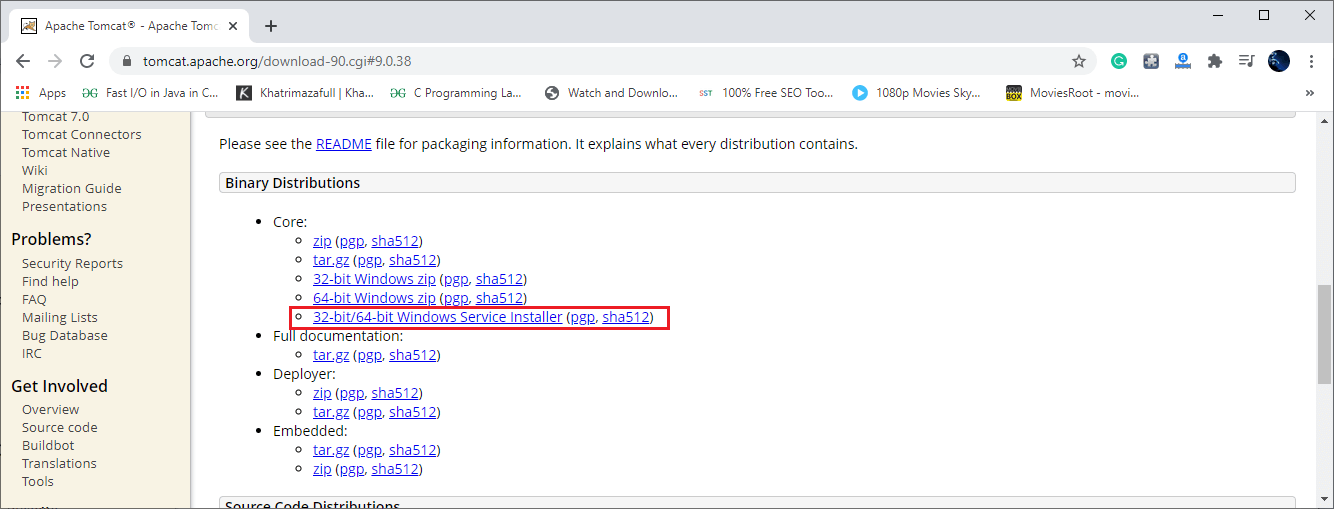
Step 2. Go to Download and click on the downloaded file and wait for little until the installation process starts.
Step 3. Once the installation process gets started, click on the “Next” button, as shown below:
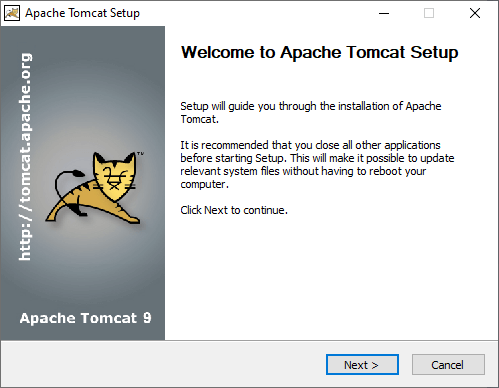
Step 4. Click on the button labeled as “I Agree.”
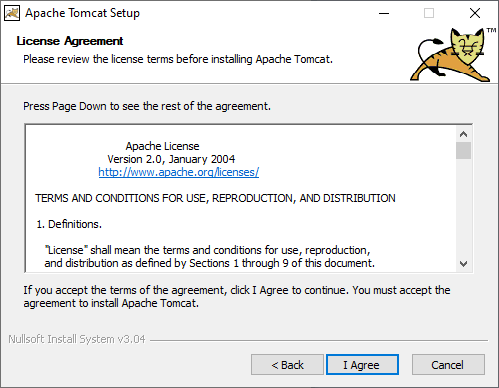
Step 5. Click on the “Next” button.
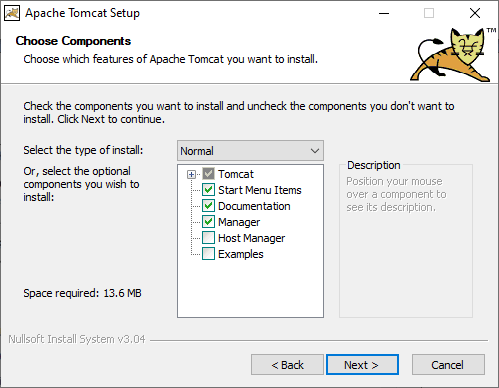
Step 6. Enter the user name and password and click on the ” Next” button, as shown below:
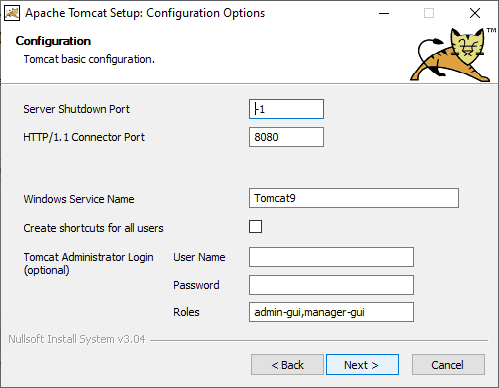
Step 7. Then click on the “Next” button again
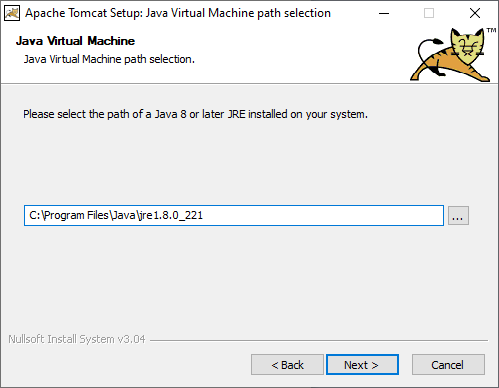
Step 8. Now click on the “Install” button.
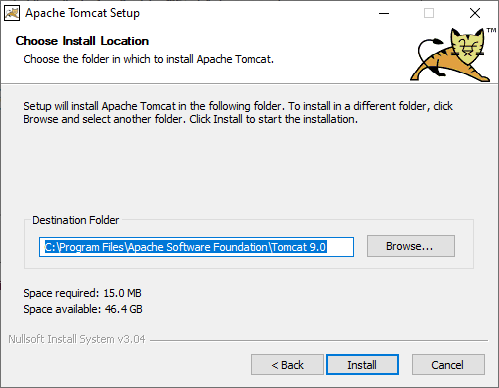
Wait for some time until the Tomcat gets installed.
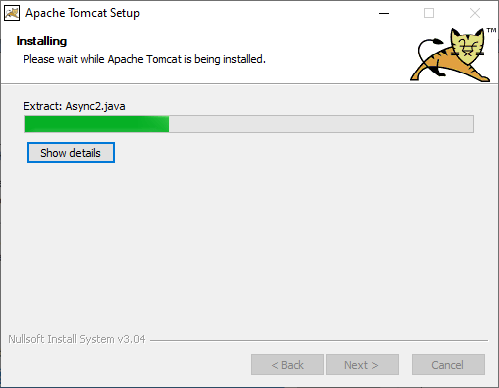
Step 9. Now click on the “Finish” button, here the installation of Tomcat is completed. It may ask you to restart your system, so restart your system.
Now you can start the Tomcat by clicking on its icon, and you can start and stop the server.
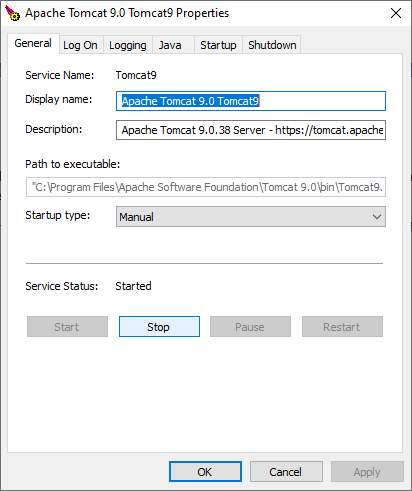
Advantages of Tomcat:
Some significant advantages of Tomcat are as follows:
- It is open-source
It means anyone from anywhere can download, install, and use it free of cost, which makes it the first choice among the new developers and new users. - Incredibly Lightweight
It is actually a very light application, even with the JavaEE’s certification. However, it provides all necessary and standard functionalities required to operate a server, which means it gives very fast load and redeploys as compared to its various alternatives.
Yes, it is right that it does not offer so many features in case you want a number of features, it might be good for you, but if you want to have an easy and fast means in order to run your application, it is the best option for you. - Highly flexible
Due to its built-in customization options, extensive and lightweight nature, it offers high flexibility, a user can run it in any fashion he wants, and it will still work as fine without any issues. Since it is open-source, anyone who has knowledge can tweak it according to his requirements. - Stability
It is one of the most stable platforms available today to build on and using it to run our applications. It is incredibly stable because it runs independently of our Apache installation. In case if there is a big failure in Tomcat due to which it to stop working, the rest of our server would run just well. - It provides us an extra level of security
As the several organizations usually like to position their Tomcat’s installation behind the protection of an extra firewall which can be accessible only from the Apache installation. - It is well documented
It has several excellent documentation available, including a vast range of freely available online tutorials that can be downloaded or viewed directly online by the user, which makes it one of the best choices to fill the requirement of an application server in mostly every java web-application.Whether a user is looking for the installation instructions, startup settings, server configuration notes, all kind of information about the Tomcat is already available on the internet. - It is one of the most widely used application servers
According to an estimation, it holds almost 60 percent of the market share almost all java application server deployments, which makes it one of the most popular application servers used for java web-based applications. However, we cannot say that it implements all of the features required for a JavaEE application server; instead, it enables us to run Java EE application.
Tomcat acts as a “webserver” or “servlet container.” However, there is a plethora of terminology for anything. - It’s mature
We take a look back in the past; we will find that it has existed for almost 20 years, which is quite a significant time, in which it gets mature over time passage. Since the Tomcat is open-source software, it’s updated, and new releases come out nearly on a regular basis, and the open-source community maintains it. The maturity makes it one of the most extremely stable application servers for the development of software, applications, and deploying java applications. Since now, it is extremely a stable option that becomes more powerful with excellent community support.
Let discuss some disadvantages of Tomcat
- It is not as fast as the Apache if we are working with the static pages
- It has some issues like a memory leak
- It’s way to handle the logs.
- Issues in the SSL installations
- Its user interface is inferior and basic.
